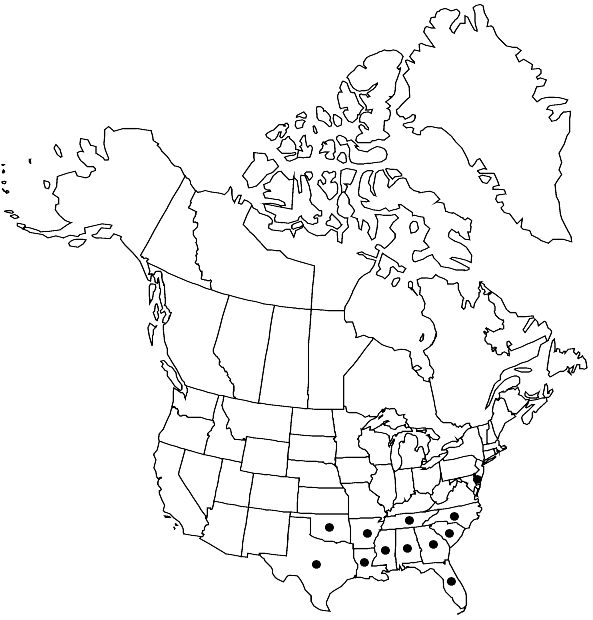Funaria serrata
Musc. Recent., suppl. 3: 70. 1817,.
Plants small to medium-sized, gregarious or caespitose. Stems 2–6 (–10) mm, erect, simple except for a basal antheridial branch. Leaves crispate to contorted when dry, erect to spreading when moist, oblong-ovate to broadly obovate, concave, 1.5–3 (–10) mm; apices acute to acuminate; margins entire to serrate distally; costa single, subpercurrent to excurrent; proximal laminal cells elongate-rectangular, distal cells rhombic-hexagonal to rectangular. Sexual condition autoicous; antheridial branches 1–2, basal, perigonial paraphyses clavate with an enlarged inflated cell. Seta erect to strongly curved or twisted, (3–) 7–20 (–80) mm. Capsule stegocarpous, usually inclined to pendent, exserted, asymmetric and usually curved, pyriform, 1.5–3 mm, often sulcate or plicate when dry and empty; exothecial cells oblong-hexagonal to linear, walls incrassate especially so on inner tangential wall; stomata immersed; annulus large and revoluble or not differentiated; operculum convex to weakly conic, usually oblique to the axis of the capsule, cells in obliquely radial rows; peristome double, teeth well developed, oblique, lance-acuminate, papillose-striate, often strongly trabeculate, frequently appendiculate at the tips and fusing with a latticed disk, endostome segments opposite the teeth, 1/6 or more the length of the teeth, papillose or weakly papillose-striate with a basal membrane, cilia absent. Calyptra cucullate, often long-rostrate, large, usually smooth. Spores spherical, smooth or papillose to baccate-insulate.
Habitat: Soil in disturbed places, often near streams or ditches
Elevation: low to moderate elevations
Distribution

Ala., Ark., Del., Fla., Ga., La., Miss., N.C., Okla., S.C., Tenn., Tex.
Discussion
Funaria serrata occurs along the coastal plain. The absence of an annulus on the strongly curved capsule and the leaves serrate nearly to the base are distinctive traits for this species.
Selected References
None.